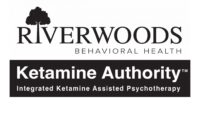
Recent studies have shown that up to 70% of individuals undergoing ketamine therapy report significant emotional breakthroughs, suggesting a profound impact on healing the inner child.
As we explore this innovative treatment, it's essential to understand not just the clinical aspects but also the emotional journey it facilitates.
From uncovering the role of our inner child in our daily lives to integrating post-therapy insights, there's a wealth of healing potential to be uncovered.
Let's embark on this discussion, keeping in mind the depth of transformation that awaits, and consider the implications for those seeking to mend long-standing emotional wounds.
Understanding Ketamine Therapy
Ketamine therapy, a groundbreaking approach, offers a novel way to address deep-seated psychological issues by altering the way our brains process emotional pain and trauma. We've seen how traditional therapies can sometimes hit a wall, especially when tackling long-standing, complex psychological barriers. However, ketamine therapy introduces a different angle, targeting the brain's structure and function to foster healing and resilience.
We're intrigued by the science behind it, which shows that ketamine can stimulate the growth of new neural connections, potentially rewiring the brain to respond more healthily to stress and emotional pain. It's not just about numbing the pain or offering a temporary escape; it's about laying the groundwork for lasting change.
As we explore ketamine therapy, we're cautious yet optimistic. It's crucial to approach it under professional guidance, ensuring it's part of a comprehensive treatment plan tailored to individual needs. We're mindful of the potential side effects and the importance of a safe, controlled environment for the therapy sessions.
We believe ketamine therapy could be a valuable tool in our arsenal for psychological healing, offering hope where traditional methods have fallen short. It's a promising step forward in the journey toward mental wellness.
The Role of the Inner Child
Exploring the concept of the inner child, we recognize its critical role in our psychological landscape and how healing it can complement the path ketamine therapy paves toward mental wellness.
We've come to understand that our inner child embodies the emotions, memories, and experiences from our earliest years. This part of us, often hidden, holds the key to understanding patterns of behavior and emotional responses that puzzle us in adulthood. It's not just about revisiting past traumas but also about rekindling the joy, creativity, and curiosity that life's hardships may have buried.
In our journey, we've learned that addressing the needs of our inner child is crucial. It's about giving voice to those silent whispers of our past selves, offering the compassion and understanding we might've lacked. This process isn't just about uncovering old wounds; it's about embracing them, acknowledging their impact, and then moving forward with a sense of renewed self.
We believe that integrating the healing of our inner child into our therapeutic endeavors, such as ketamine therapy, provides a holistic approach to mental health. It's not merely about symptom relief but about fostering a deeper healing, one that reconciles our past with our present to build a more harmonious future.
Therapeutic Benefits Explored
Delving into the therapeutic benefits of ketamine therapy, we find its potential to significantly enhance mental health by addressing deep-seated emotional wounds. This innovative treatment has been gathering attention for its ability to provide rapid relief from conditions like depression, anxiety, and PTSD, which often stem from unresolved childhood trauma. By facilitating a unique state of consciousness, ketamine therapy allows us to access and process these buried emotions in a safe and controlled environment.
We've observed that many individuals struggling with traditional therapy find ketamine sessions to be a breakthrough. The substance's psychoactive properties can help break down barriers that have hindered healing, offering a fresh perspective on old pains. It's not just about temporary relief; it's about fostering a deeper understanding and compassion towards oneself, laying the groundwork for lasting change.
Furthermore, the neuroplastic effects of ketamine mean it's not only about emotional healing but also about physical brain health. It encourages the brain to form new neural connections, making it easier to adopt healthier thought patterns and behaviors. This dual action makes ketamine therapy a powerful tool in our arsenal for mental health care, offering hope and a path forward for those who've felt stuck in their healing journey.
Navigating Emotional Release
Many find that navigating the emotional release during ketamine therapy can be both liberating and challenging, as it opens up pathways to confronting deeply rooted feelings. We're invited into a space where our innermost vulnerabilities surface, sometimes for the first time. It's a journey that demands courage, as facing long-buried emotions isn't easy. Yet, it's in this vulnerability that we find the strength to heal.
As we go through these sessions, we learn to embrace our emotions rather than fear them. It's a process of acknowledging our pain, understanding its origins, and accepting that it's a part of us. This acceptance doesn't happen overnight. It requires patience and a willingness to be present with our feelings, no matter how uncomfortable.
The emotional release can feel overwhelming at times. We might experience a flood of memories or intense feelings of sadness, anger, or joy. It's crucial to have a supportive therapist by our side, guiding us through these moments and helping us make sense of our emotions. They provide a safe space for us to explore our inner world, ensuring we're not alone in this transformative journey.
Integrating Insights Post-Therapy
After navigating the emotional release during ketamine therapy, we must now focus on integrating the insights gained into our daily lives. This process is as crucial as the therapy itself, for it's where real change begins to take root. We've uncovered deep-seated emotions and patterns; now, we're tasked with applying these revelations towards healing.
We start by setting aside time daily to reflect on our experiences. It's not enough to have these profound moments if we don't actively work to understand and incorporate them. We journal, discuss with our therapist, and meditate on what we've learned, ensuring these insights don't fade but instead, guide our actions and decisions.
We also commit to being patient with ourselves. Change doesn't happen overnight, and there will be times we fall back into old habits. When this happens, we don't criticize ourselves but rather acknowledge it as part of the journey. We remind ourselves of the progress we've made and the tools we now have to cope differently.
Lastly, we make conscious decisions that align with our new understanding. Whether it's setting boundaries, pursuing passions we've neglected, or simply treating ourselves with more kindness, every choice is a step towards embodying the insights gained from our inner child's healing journey.
Frequently Asked Questions
How Does Ketamine Therapy for Healing the Inner Child Differ From Traditional Psychotherapy Approaches in Terms of Long-Term Outcomes?
We're exploring how this specialized therapy stands apart from usual psychotherapy regarding long-term effects. Essentially, ketamine therapy offers a unique path by directly influencing the brain's chemistry, potentially leading to quicker emotional breakthroughs and healing.
Unlike traditional methods that rely heavily on talk therapy and cognitive techniques, this approach might foster deeper, more lasting changes in how we process and overcome our past traumas, paving the way for a more profound internal healing process.
Can Ketamine Therapy Be Combined With Other Forms of Treatment for Inner Child Healing, Such as Art Therapy or Mindfulness Practices, and if So, How?
We're exploring how combining various treatments, like art therapy or mindfulness, with our current approach can enhance inner child healing. It's intriguing to consider these integrations; they potentially offer a more holistic recovery.
By incorporating creative or meditative practices, we're not just relying on one method but creating a richer, multifaceted healing journey.
It's about finding the right balance that caters to individual needs, ensuring a deeper, more sustainable healing process.
Are There Specific Personality Types or Psychological Profiles That Respond Better to Ketamine Therapy for Inner Child Work Than Others?
We're really curious if certain personality types or psychological profiles benefit more from ketamine therapy, especially when tackling deep-seated issues. It's fascinating to consider how individual differences might influence the therapy's effectiveness.
We've noticed that everyone's healing journey is unique, and integrating this approach could offer new paths for growth. We're eager to explore how personal traits could play a role in enhancing the therapy's outcomes for individuals.
What Measures Are in Place to Ensure the Safety and Mental Well-Being of Patients Undergoing Ketamine Therapy for Inner Child Healing, Especially Those With a History of Substance Abuse?
We're always careful to prioritize our patients' safety and mental well-being, especially when there's a history of substance abuse.
To ensure this, we've put strict protocols in place, including comprehensive screening processes, close monitoring during therapy, and personalized follow-up care.
These measures are designed to minimize risks and support our patients throughout their treatment.
Our team's commitment is to provide a safe environment for everyone seeking help.
How Do Practitioners Gauge the Success of Ketamine Therapy in Healing the Inner Child, and What Follow-Up Care Is Recommended to Maintain Therapeutic Gains?
We're curious about how success is measured in therapy sessions and what kind of follow-up care is suggested to keep the progress going.
To gauge the effectiveness, therapists often look for significant emotional and behavioral changes in us. For maintaining the gains, they usually recommend a combination of ongoing therapy sessions, lifestyle adjustments, and sometimes, participation in support groups.
It's all about ensuring we continue to move forward in our healing journey.
Conclusion
In concluding, we've discovered that ketamine therapy offers a profound avenue for healing our inner child. Through delving into the depths of our subconscious, we've unlocked therapeutic benefits that foster emotional release and integration of insights.
As we navigate this journey, we've learned the importance of embracing every moment of emotional release, ensuring we integrate these insights post-therapy.
Most importantly, we're reminded that healing isn't just a journey, but a transformation that reconnects us with our most authentic selves.

